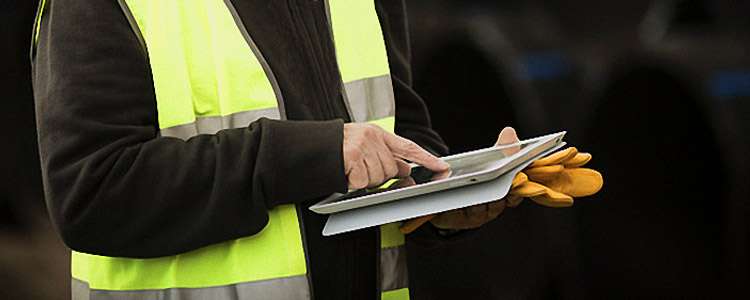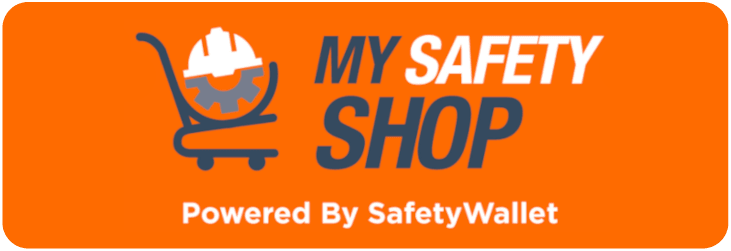Health and Safety Inspections

Frequent inspections of safety and effective operation of all equipment are the backbone of your H&S programme.
They ensure that:
- People keep doing what they are supposed to do, and do not become lax or complacent.
- There are records to prove that there was no negligence when damage or injury occurs.
- In the event of an emergency, safety equipment is functional. Failure of operational function can result in death. There is no time to check equipment when there’s an emergency.
- There is consistent compliance to H&S standards, preventing the company from being shut down or fined.
Risks and Hazards
- Hazard: something that can cause harm
- Risk is the chance, high or low, that any hazard will actually cause somebody harm.
In risk management for OHS, you first identify what might pose a risk to safety in the workplace, and then decide how big a risk each hazard is. Depending on how serious each risk is, you allocate time and resources to deal with it, thereby exercising risk control. The higher the risk, the more you do to control the risk. This sounds like common sense, and it is. However, in order for risk management to work properly, the decision maker (the risk manager) must have good information on which to base decisions. You must know which risks exist and how dangerous they are before you can decide on what resources to devote to controlling them.
The systems and processes described below are designed to help you:
- Identify the hazard that exists in your facility.
- Assess those hazards so that you can decide which pose a real risk to your safety (Risk Assessment)
- Develop solutions to those risks and implement the solutions (Risk Control)
- Monitor the implementation of controls to make sure they are working (performance measurement)
- Review the actions taken so that greater safety can be achieved (Continuous improvement)
These steps, taken together, form a risk management approach to OHS. Resources and time are limited in every organization, and therefore it is not possible to do everything which is theoretically possible in order to create a safe workplace. To make the most effective use of resources, you should make your decision based on:
- Which hazards really do exist on your premises?
- Which of these hazards pose the greatest risk to your employees and visitors?
The risk management – based approach to OHS consists of answering these two questions and then developing an OHS action plan based on the answers, the steps involved are as follows:
- Hazard Identification
- Risk Assessment
- Risk Control
- Monitor and Evaluate Outcomes
Develop an OHS action plan before you conduct inspections
For each high priority risk, actions must be planned and documented in the OHS action plan. The following questions will help you develop an OHS Action plan:
- Are policies and procedures adequate?
- Are practices adequate?
- What are our current results?
- What are our goals?
- How will we measure success?
Whenever your OHS action plan delegates any responsibilities to an employee, you must first ensure that the person has the time and the resources they need. OHS is a core business, not an extra add on to employees’ duties. It cannot be fitted in when employees have a bit of spare time.
Your OHS plan must include:
- Budget
- Resources available
- Responsibilities
- Roles
- Goals for improved performance
- Timelines, for example – when policies and procedures are due for review
- Information about action planned or about action taken and results
- Evaluation procedures for measuring performance against goals and ensuring continuous improvement
Develop the OHS plan in consultation with senior managers and employees, particularly Health and Safety Representatives. In your document, you should include the areas that need to be inspected and any documents, assessments or checklists that will be used in each area.
Hazard management process
- Hazard identified (assessment that is conducted/report/indecent, etc.)
- List on hazard log
- Conduct a risk assessment
- Select risk control solutions
- Develop risk control plan (who, when, how, training, etc.)
- Implement risk control
- Monitor and review outcomes
Each step must include consultation with employees and feedback.
The first step in managing workplace hazards is to identify them. It is important to involve everyone in this task.
Tools to help you identify and address hazards:
- Hazard log
- Incident/injury report
- Hazard report
- Structured workplace inspection using a workplace inspection checklist.
You may plan a specific strategy for identifying hazards, or your hazard identification may be continuous and integrated into day-to-day activities. Examples of each type of hazard identification strategy are listed below:
Planned strategies may include:
- Monthly, six-monthly and annual review of data (hazards, incidents, rehabilitation and maintenance records).
- Hazard inspections, including regular workplace inspections.
- Considering potential hazards prior to purchasing new equipment or chemicals.
- Using industry information from employer organizations and unions to highlight issues that have not been considered.
If you have only a minimal OHS system in place, it would be wise to start with a review of your data and hazard audit. This information will then form the basis for your risk assessment process, which must be done in consultation with employees.
Continuous strategies include:
- Hazard reports completed by employees
- Incident reports and investigations
- Informal observations
- OHS discussion at employees’ meetings and health and safety committee meetings
- Breakdown maintenance records
Hazard Inspections
Regular workplace inspections using a checklist enables you to identify hazards not noticed on a day-to-day basis. The objective is to identify hazards, monitor OHS standards and ensure that corrective actions are taken within an agreed timeframe. Inspections should include a wide range of issues such as housekeeping, emergency equipment, lighting, tools, storage and hazardous substances, and should involve employees working within that area.
Workplace hazard inspection process:
- Select inspection team
- Inspect workplace using checklist (e.g: Health and Safety Representatiove Checklist)
- Identify hazards
- Record hazards/ action on hazard log
- Implement OHS action plan
- Monitor and review outcomes
On completion of the workplace hazard inspection:
- Allocate and record actions
- Record identified hazards on the hazard log (including a review date)
- Forward the workplace inspection checklist to the manager/OHS coordinator
- Sign the sheet once tasks have been completed
- Enter long-term actions on the OHS action plan and amend the OHS plan if necessary
- Monitor the workplace inspection checklist to ensure that all actions have been implemented
Hazard Reports
Effective hazard reporting is essential for successful hazard management and to meet the requirements of Occupational Health and Safety Act 85 of 1993 legislation. Implementing the use of a hazard log will encourage your employees to identify and report hazards. You can then implement controls before an injury occurs. Encourage employees to complete hazard reports for any situation which requires actions beyond simple maintenance.
Hazard reports should be:
- Completed by anyone – employees, managers, contractors, etc.
- Signed by the person who completes them
- Investigated, and improvements planned and implemented by the director/supervisor (in consultation with employees)
- Signed by a health and safety committee or employees’ meeting
Incident investigation and their relationship to hazard identification and risk control
Incident investigations are rich sources of information for monitoring and evaluation. Ideally where serious incidents or injuries have occurred, senior managers (including business owners or board members) should be involved in the investigation and should take responsibility for ensuring that any corrective action necessary receives the appropriate resources.
Conclusions and recommendations should be developed in consultation with employees – particularly the employees who will be affected by any proposed changes.
Incident report forms are legal documents and must be completed thoroughly and objectively. It is essential to investigate incidents in order to be able to identify and address hazards. This requires investigators (A manager and health and safety representative or employee) to be trained for the task. A detailed approach must be used, particularity for long-term incidents or symptoms where underlying causes may be hard to identify.
MAKROSAFE has been assisting clients now for more than 23 years with Inspections and Incident Investigations, and much more.
To find our how we can assist you, CONTACT US now.
To view all our Health and Safety Services, OHS Products and OHS Training, click on the picture below:
MAKROSAFE / SAFETYWALLET / MY SAFETY SHOP are in Partnership.
Things you need to consider when investigating incidents include:
- Who was involved?
- Where and when did this incident occur?
- What task or work was being performed?
- How did the incident occur, for example, was a client, chemical or equipment involved?
- What were the events leading up to the incident?
Another way of thinking about identifying causes is to ask:
- Is there a problem with the way the work is organized?
- Is there a problem with the way employees or visitors are managed?
Look for problems relating to equipment, the task, work environment or procedures (not just what a person did wrong). If similar incidents have occurred, reports on those incidents should also be considered in order to identify any patterns or underlying causes. If it is not an individual problem, such things as communication skills, allocation of employees, clinical skills, training, policy and procedures and care plans may all need to be investigated.
You can use investigation and consultation to identify the underlying causes (hazards). You will then need to conduct a risk assessment on each hazard. Whenever a hazard was already known, you use the information to assess how well or poorly the control strategy is working.
Next, develop a plan for controlling the hazards identified. The plan must include timeframes and responsibilities, and must record the outcomes on the incident/injury report and the hazard log. Discuss the injury statistics and decisions taken by the health and safety committee and during employees’ meetings. Document the discussion in the minutes, including a review of the effectiveness of the actions taken.
You may choose to use separate incident report forms for employees and visitors or to use the same form. If the same form is used, confidentiality of visitors’ records must be protected. Employees’ reports must also be kept confidential, with incidents discussed at meetings, but without identifying the individuals involved.




Comments (1)
Hi Good Morning I just want to ask you if you dont have a S H E Plan Indicator how to maintain equipment and inspect equipment please
2022-11-25 11:14:33